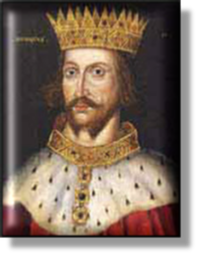 xxxxxHenry was a tough and resourceful man with enormous
energy and a will of iron. The son of Geoffrey of Anjou, he
inherited Normandy as well as Anjou when he came to the throne in
1154. In addition, by his marriage to Eleanor of Aquitaine, and by a
combination of conquest and diplomacy, he eventually acquired a
string of possessions - including Poitou, Guienne and Gascony -
which stretched across the whole of western France from the Pyrenees
to the coast of Normandy. He possessed more land than the King of
France himself! Overseeing what must be regarded as the largest
European "empire" ever held by a king of England (even if loosely in
some instances), it is hardly surprising that he spent more than
half his reign on the continent.
xxxxxHenry was a tough and resourceful man with enormous
energy and a will of iron. The son of Geoffrey of Anjou, he
inherited Normandy as well as Anjou when he came to the throne in
1154. In addition, by his marriage to Eleanor of Aquitaine, and by a
combination of conquest and diplomacy, he eventually acquired a
string of possessions - including Poitou, Guienne and Gascony -
which stretched across the whole of western France from the Pyrenees
to the coast of Normandy. He possessed more land than the King of
France himself! Overseeing what must be regarded as the largest
European "empire" ever held by a king of England (even if loosely in
some instances), it is hardly surprising that he spent more than
half his reign on the continent.
xxxxxBut when he was in
England he lost no time in consolidating the power of the Crown. He
negotiated under threat the return from Scotland of the border lands
of Northumberland, Cumberland and Westmorland, and later exacted
homage from the leaders of both Scotland and Wales. In Ireland,
however, he was obliged to resort to the use of force. With the
approval of the Pope, Adrian IV, he sent the Earl of Pembroke on an
exploratory expedition and then followed himself, landing at
Waterford in 1171. There was little real resistance, and by 1176 the
majority of Irish chieftains had pledged their loyalty to the
English king. But the invasion and conquest of Ireland, like those
that were to follow, proved a hollow victory. By the end of the
reign only Dublin and the surrounding area could be regarded as
loyal to the Crown.
xxxxxAt home, he ruthlessly
restored law and order and effectively curbed the power of the
barons, thanks in great part to the work of his industrious
chancellor Thomas Becket.
In particular, his overhaul of the judicial system whereby greater
powers were given to the king's courts introduced the concept of a
common law throughout the land. A jury of twelve "lawful" men,
introduced in 1166 in the Assize of Clarendon, gradually came to
replace God's judgement based on trial by ordeal or battle. Such
innovations testified both to his forward thinking and
administrative ability and, it must be said, to those of his well-chosen
ministers, not least among whom was Ranulf de Glanville,
his chief minister.
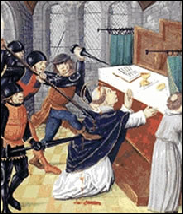 xxxxxHowever, he did not succeed in carrying
through all the legal reforms he had in mind. In trying to reduce the
exceptional privileges of the clergy and, in particular, the
independence of their courts - notably by the Clarendon
Constitutions - he began a violent quarrel with his close friend
Becket whom, ironically, he had purposefully made Archbishop of
Canterbury so as to gain more power over the clergy. The murder of
Becket on the altar steps of Canterbury Cathedral (illustrated) is a landmark in English history. Whether his
angry outburst - he was well known for his vile temper - was
meant to be taken seriously or not ("Will no one rid me of this
turbulent priest?" - or words to that effect), the murder put an
abrupt end to any hopes of making the clergy more answerable to civil
law. It also brought him into conflict with the papacy and dented his
image abroad.
xxxxxHowever, he did not succeed in carrying
through all the legal reforms he had in mind. In trying to reduce the
exceptional privileges of the clergy and, in particular, the
independence of their courts - notably by the Clarendon
Constitutions - he began a violent quarrel with his close friend
Becket whom, ironically, he had purposefully made Archbishop of
Canterbury so as to gain more power over the clergy. The murder of
Becket on the altar steps of Canterbury Cathedral (illustrated) is a landmark in English history. Whether his
angry outburst - he was well known for his vile temper - was
meant to be taken seriously or not ("Will no one rid me of this
turbulent priest?" - or words to that effect), the murder put an
abrupt end to any hopes of making the clergy more answerable to civil
law. It also brought him into conflict with the papacy and dented his
image abroad.
xxxxxIn addition, throughout his
reign he had constant trouble with his rebellious sons, often aided
and abetted by their mother. Whilst he did divide his dominions
amongst some of his sons, it was a division in name only. Henry kept
power in his own hands. And the fact that the youngest son John
never received a fair share of the cake - he was dubbed John
"Lackland" - led to violent disputes between the sons
themselves as well as attempts by them to overthrow their father. At
one time two of his sons, Henry and Richard, took up arms against
him and, towards the end of his reign, when France declared war
against England, Richard and John joined forces with the French.
Betrayed and deserted by his family, he was obliged to accept a
humiliating defeat. In July 1189 he died while staying near Tours, a
broken, unhappy man, and Richard, the eldest surviving son,
succeeded him to the throne.
xxxxxIncidentally,
HenryxII was the first of the Plantagenet kings - there
were eight in all - a name derived from the fact that, so we
are told, his father, Geoffrey of Anjou, used to wear in his hat a
sprig of broom (planta genista in Latin).



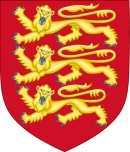





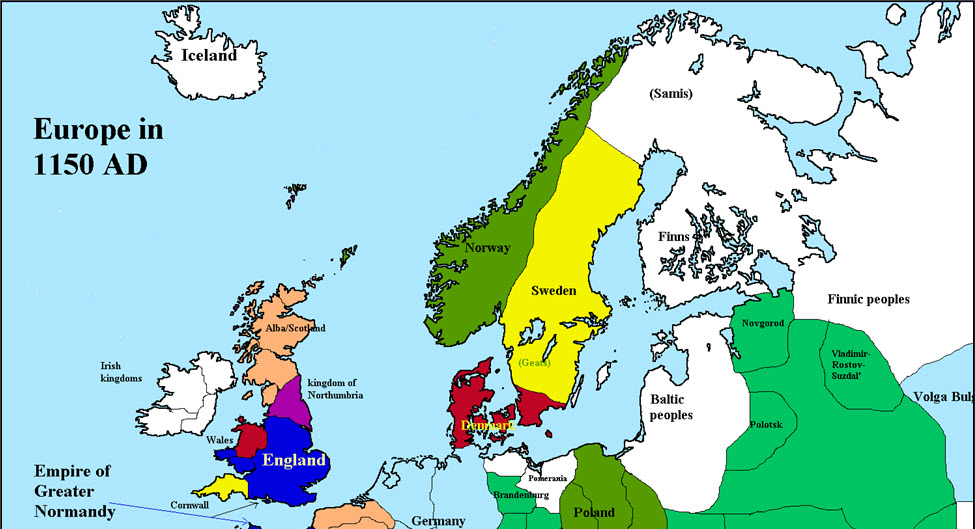
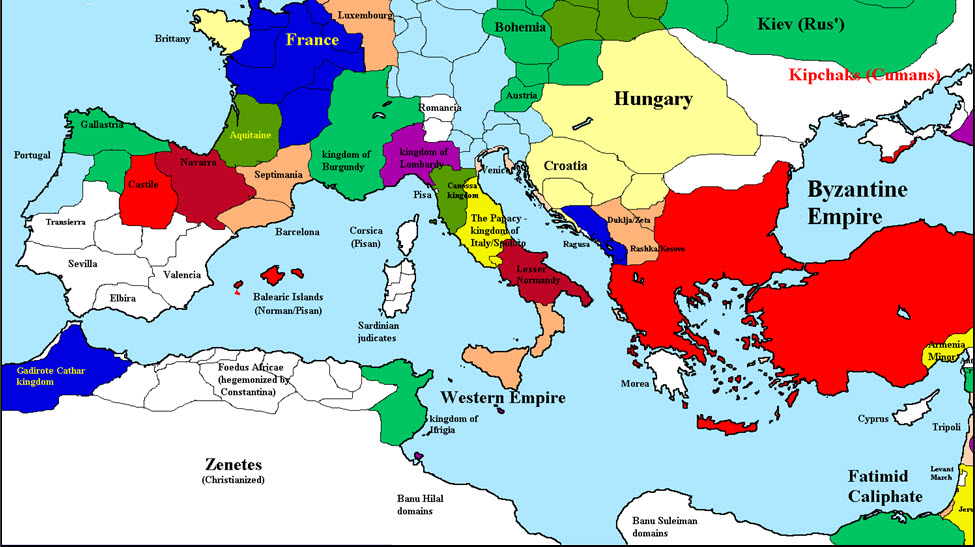

 xxxxx
xxxxx
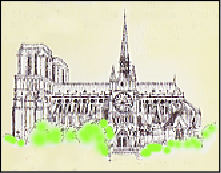 Work
is begun on the famous church
Work
is begun on the famous church  The
Peace of Venice brings reconciliation between Emperor
The
Peace of Venice brings reconciliation between Emperor 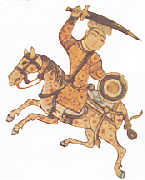 The
French poet,
The
French poet, 